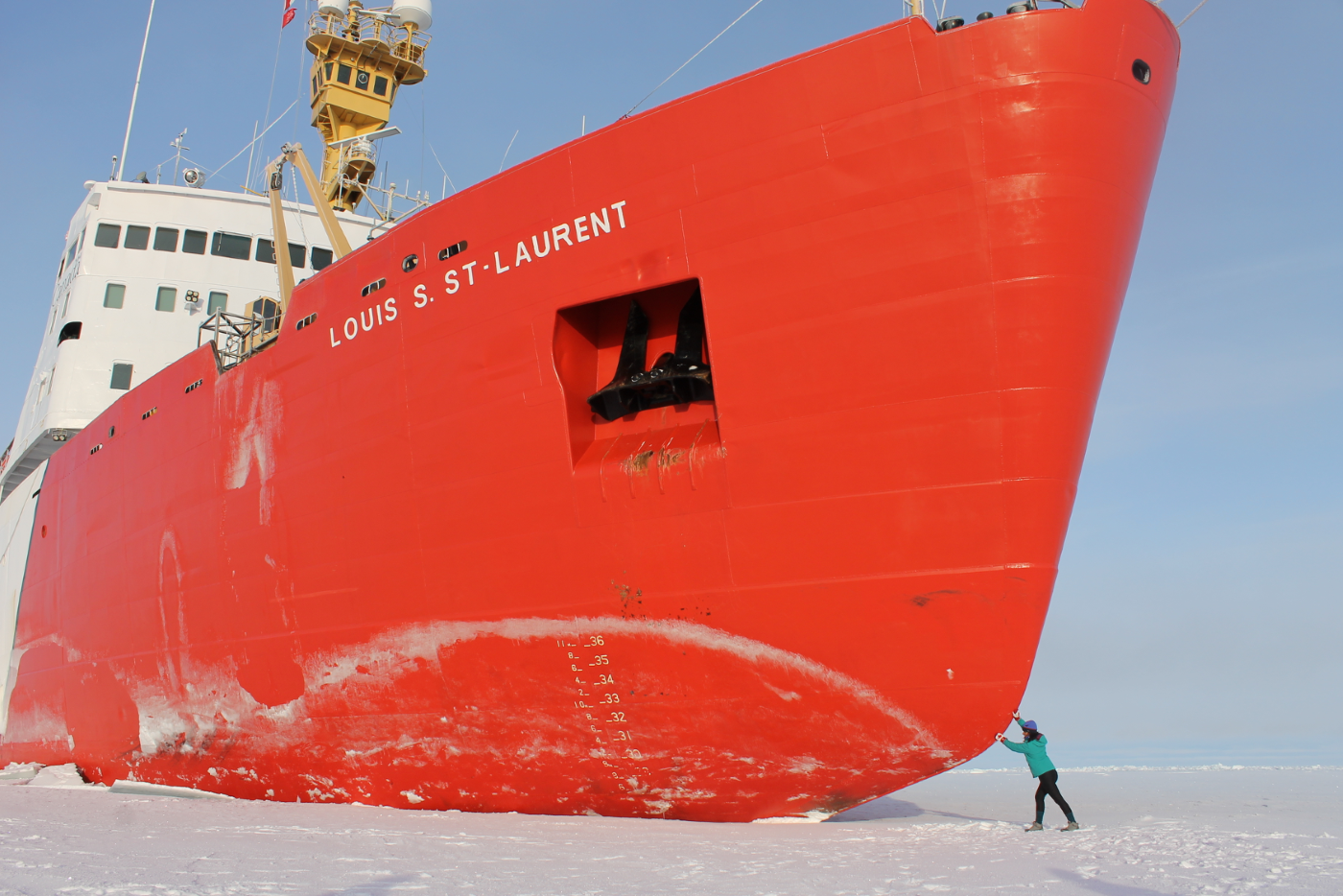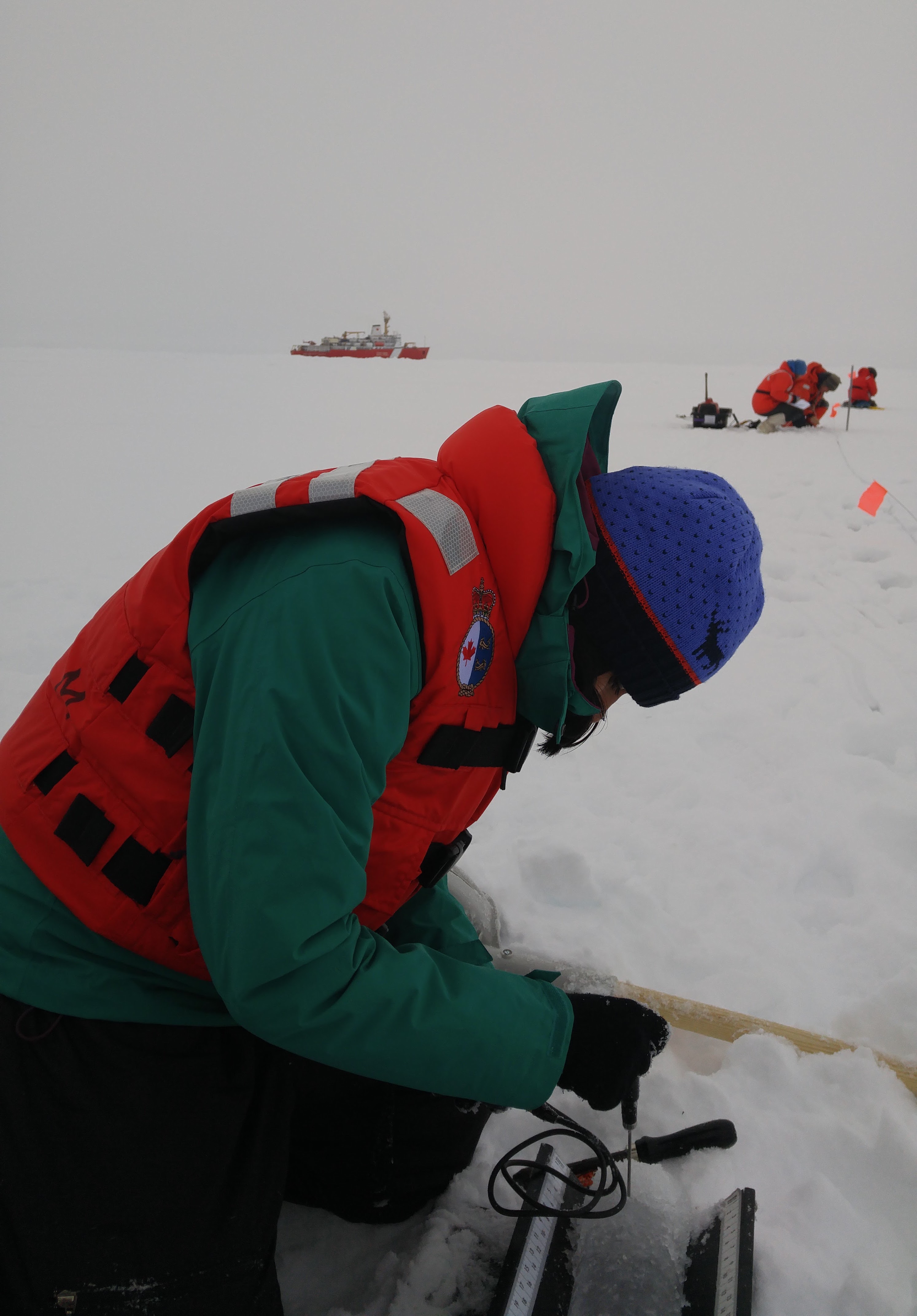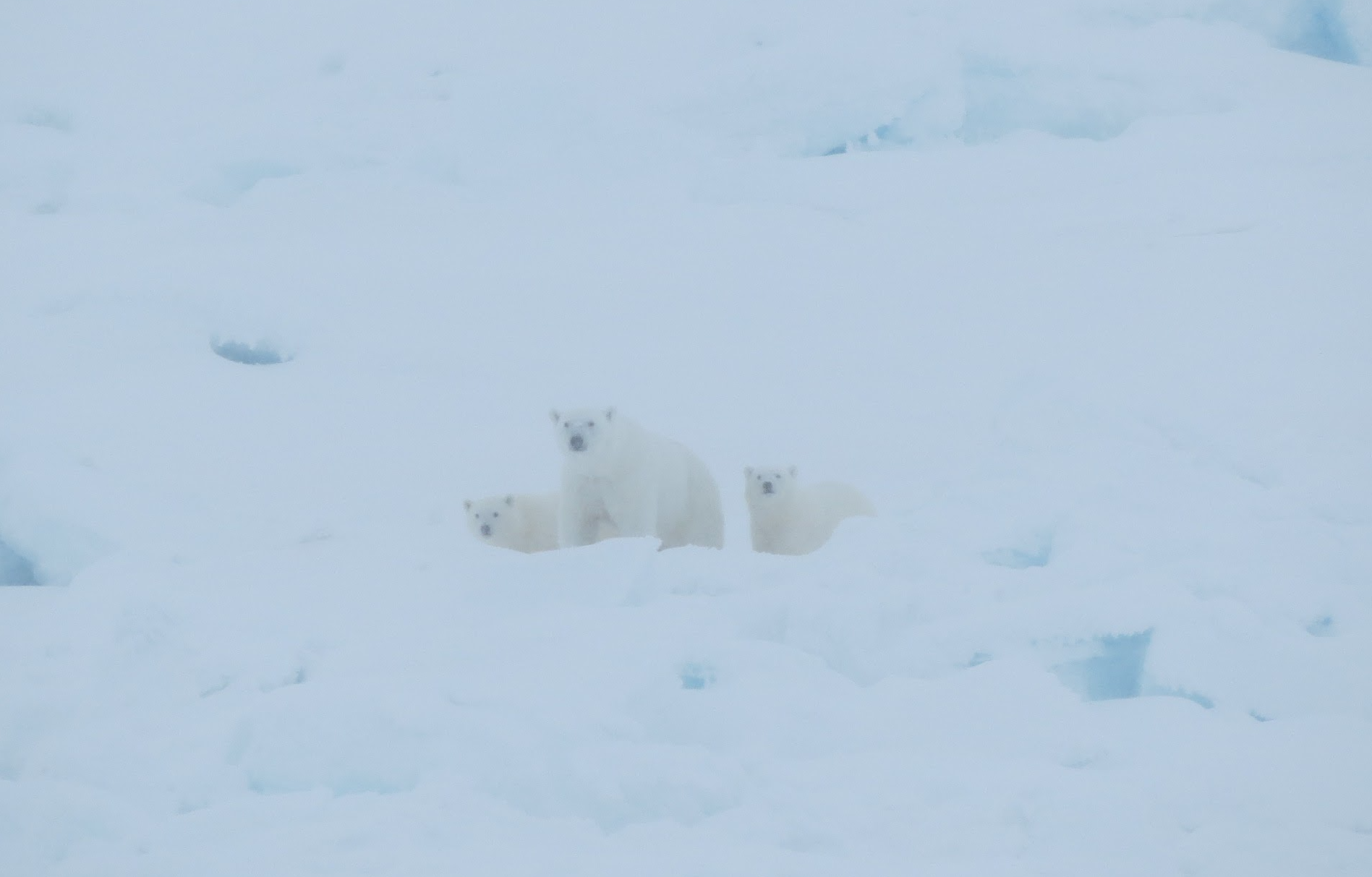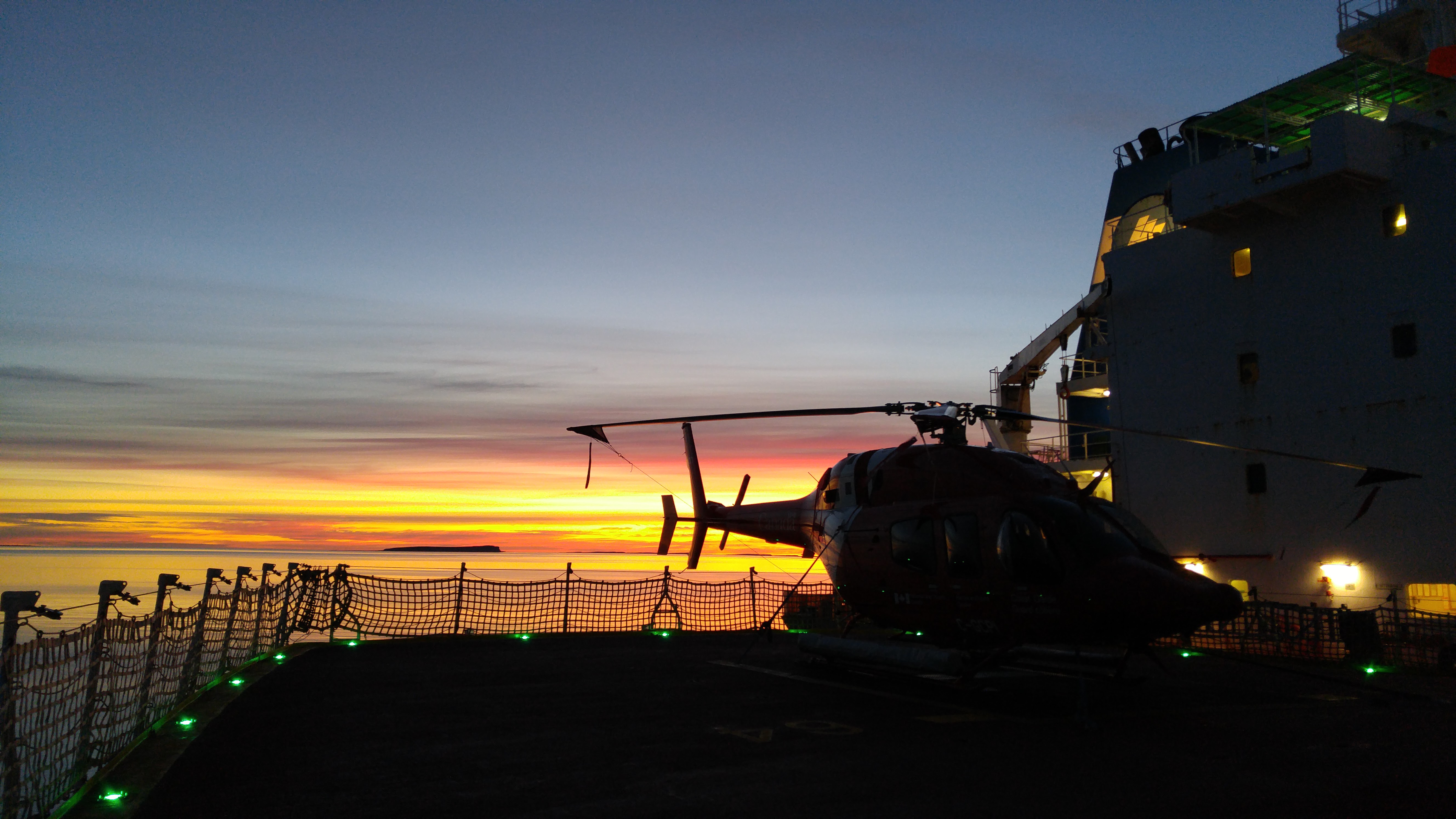Blue Notes, Part 3: Field Work North of 66°
June 8, 2020
In this post, Arthi Ramachandran (PhD Candidate, Concordia University in Montréal) discusses her experiences as a researcher in the Arctic Ocean. This is the third entry in the Blue Notes series, edited by Aylin Malcolm. For other posts in this series, see the Introduction as well as Parts 1 (by Steve Mentz) and 2 (by Melody Jue)
When I embarked on the adventure of getting my PhD in Microbial Ecology, I never imagined that this path would lead me to the Arctic Ocean. My field of study, microbial ecology, focuses on understanding the ecology of microorganisms, such as bacteria, and their relationships with their environments. When I began my graduate work in September 2014, my focus was on bacterial change linked to environmental variables in lakes and estuaries, which are interesting in their own right, but not the ocean that I longed to study. Luckily, in September 2016 and 2017, I had the opportunity to be a part of the Joint Ocean Ice Study, an international research mission that monitors oceanographic conditions in the Western Arctic Ocean, specifically the Canada Basin, through an annual month-long expedition aboard the CCGS Louis S. St. Laurent, Canada’s largest icebreaker. After this amazing learning experience, I decided to shift my PhD project to focus on Arctic Ocean microbes. Specifically, I study how bacteria in the Arctic Ocean are evolving and adapting to changing environmental conditions, which can be linked to climate change.

Arthi pushing the icebreaker.
To go a little more in depth, my PhD research focuses on understanding the rapid changes currently occurring in the Arctic Ocean ecosystem by studying its bacterial communities. Global climate change is impacting the oceans by increasing sea surface temperatures and sea ice melt. Together, these effects alter water circulation patterns. These changes can then affect marine ecosystems by changing food web dynamics. Bacteria play an important role in nutrient cycling and are an integral part of the marine food web because they provide essential nutrients (food) for slightly larger organisms (krill), which are then consumed by even larger animals (whales). Therefore, changes to bacterial communities can drastically affect large subsistence species, such as beluga whales, seals, and fish. To determine the consequences of climate change on Arctic communities, we need to better understand the diversity and metabolism of bacteria living in the Arctic Ocean.
Life on a ship in the middle of the Arctic Ocean can be a difficult experience. While I met amazing people aboard the ship, I was completely disconnected from the rest of society. Internet access was sparse, if at all available, and communication was limited to short emails through an Iridium connection. Luckily, since most of the time was spent collecting samples, I didn’t need the internet to do my work. My day usually consisted of some variation of waking up, grabbing some food, running to the lab to collect or process samples, working with my colleagues, and going to sleep. Our expedition took place in the fall so we were lucky to have some darkness, but time doesn’t really matter when you are collecting samples around the clock.
Arthi processing samples.
The way this expedition works is that the ship passes through about 50 sampling sites during the month, only stopping long enough to let us collect samples, which takes around 4 hours per site. To collect bacterial DNA samples, we pass 7–10 L of seawater through small filters to capture the cells, repeating this for 6–8 depths per sampling site. Since I was at the mercy of my sampling route, if I had back to back stations that were only a few hours apart, I would have to ensure that my samples were filtered, processed, and preserved – as well as that my equipment was cleaned – before reaching the next station. This led to me having quite a disturbed sleep pattern, and there were times where I was awake for days. But when you have one-of-a-kind, priceless samples to collect, what’s a little bit of sleep loss in the grand scheme of things? One might think that walking around with liters of water on a ship at 3 AM when the high swells are knocking you side to side would eventually become “normal,” but it felt like a new experience to me each time.
The water sampler (CTD rosette).

Arthi collecting information about ice core samples.
One of the best parts of being aboard the Louis was that I was able to interact with scientists from diverse backgrounds and different fields of study. It was a great learning and networking opportunity. For example, I learned how ocean currents and the different water masses of the Arctic Ocean are affected by climate change, and how we can detect radiation from the Fukushima Daiichi nuclear disaster in the surface waters of the Arctic Ocean. The ship was a very collaborative environment, so while we all worked together in confined spaces, we made sure to be respectful of others’ equipment and samples. There was always someone nearby willing to lend a hand when you had none left to hold all your gear. I would have to carry over 60 L of water down to the lab for each station and was always grateful that there was someone to help me carry the jugs down. Being in such close quarters with these amazing scientists also allowed me to apply what I learned about Arctic Ocean dynamics to my own research. I was able to connect the increased flow of freshwater to the surface of the Arctic Ocean with changes in the types of bacteria living there.
When I wasn’t busy collecting samples, I was able to sit on the aft deck of the ship while sipping coffee and enjoying the Arctic landscape. It’s easy to get lost in the hustle of processing samples, so taking those valuable moments to connect with the environment was very grounding. Prior to this experience, I found that the research I was conducting in the lab was disconnected from the environment that I was studying. Being on this expedition allowed me to develop a more personal relationship with my research. Some of my most cherished moments aboard the Louis were watching the Aurora Borealis in the middle of the night, huddled up and freezing cold; observing a polar bear and her two cubs wander near the stopped ship; and playing hacky-sack on the heli-deck between sampling stations.

Polar bears on the Arctic ice.
This experience deepened my emotional connection to my research, as I was no longer studying an environment that I could only dream of visiting. There’s a big difference between knowing that climate change is affecting the Arctic and seeing it firsthand. Visiting stations that were previously ice-covered but were now just open water made for a visually jarring experience. The changes were happening quickly and the consequences happening even more quickly.
Standing on the sea ice, watching the sun start to set on the horizon, I realized how lucky I was to be able to connect not only with the environment I’ve been extensively studying, but also with all the scientists helping to piece together the importance of the Arctic Ocean ecosystem.

Watching the sunset on the aft deck of the CCGS Louis S. St. Laurent.
